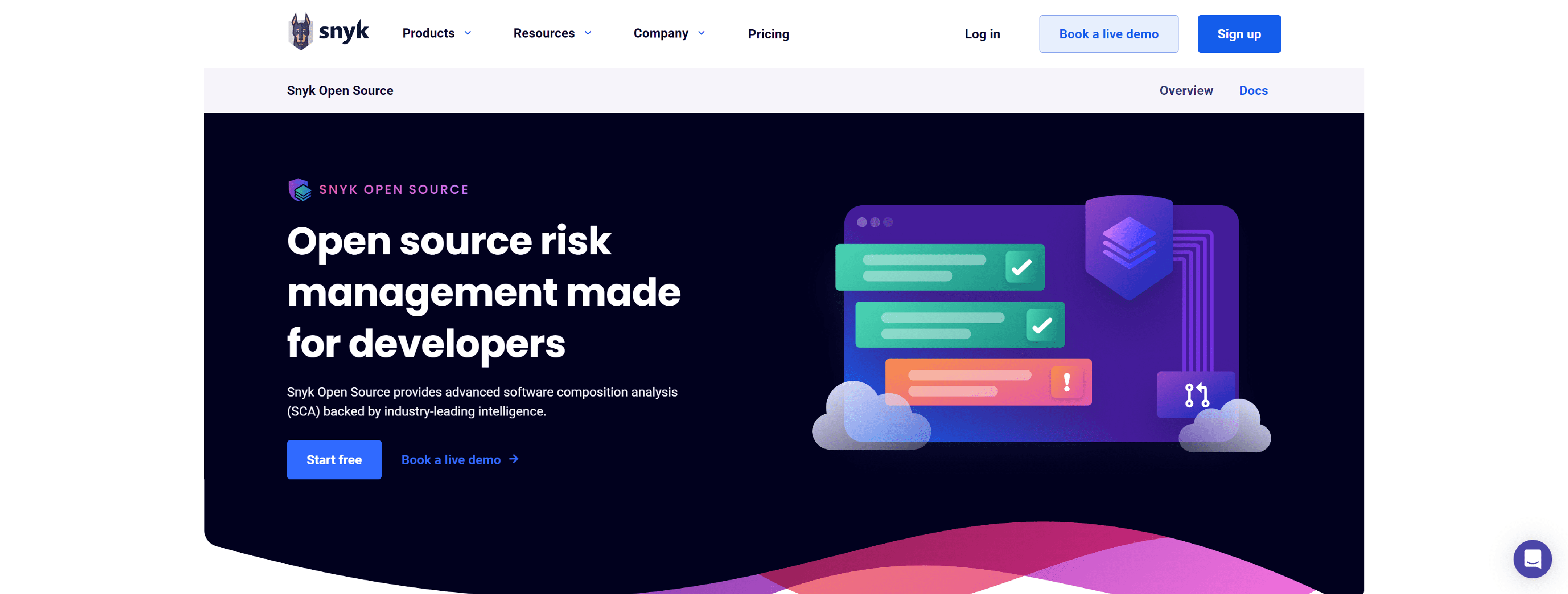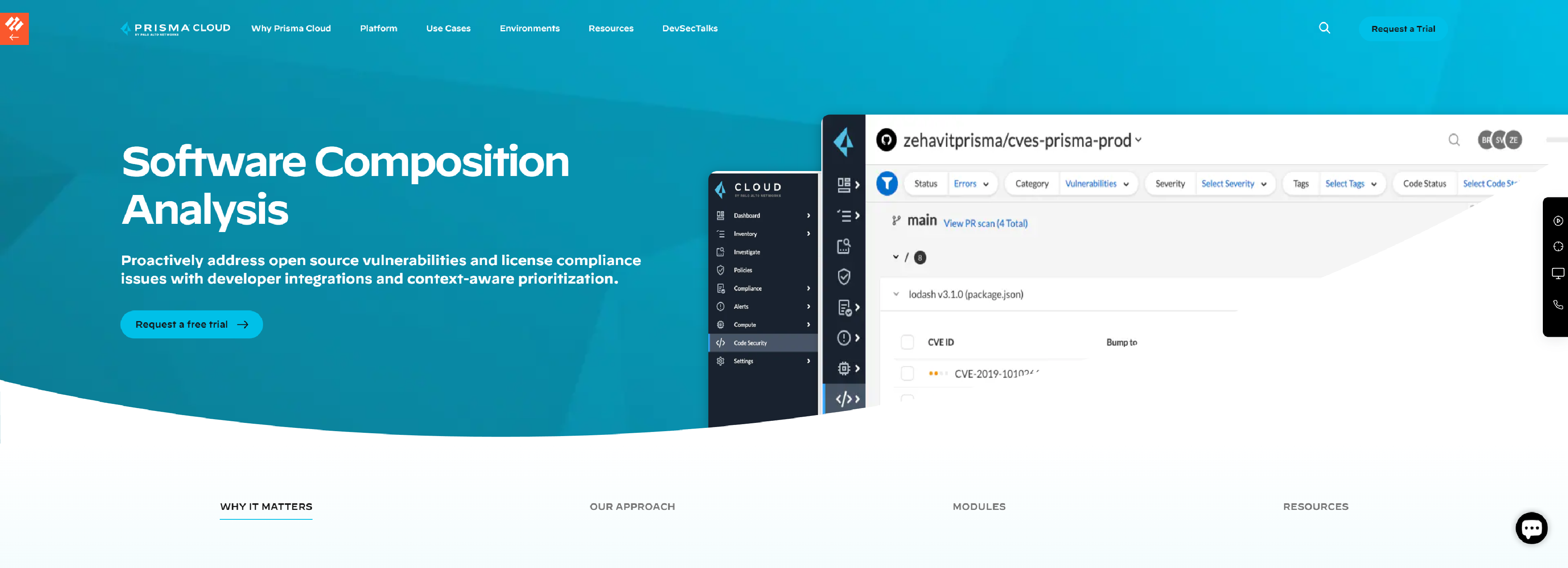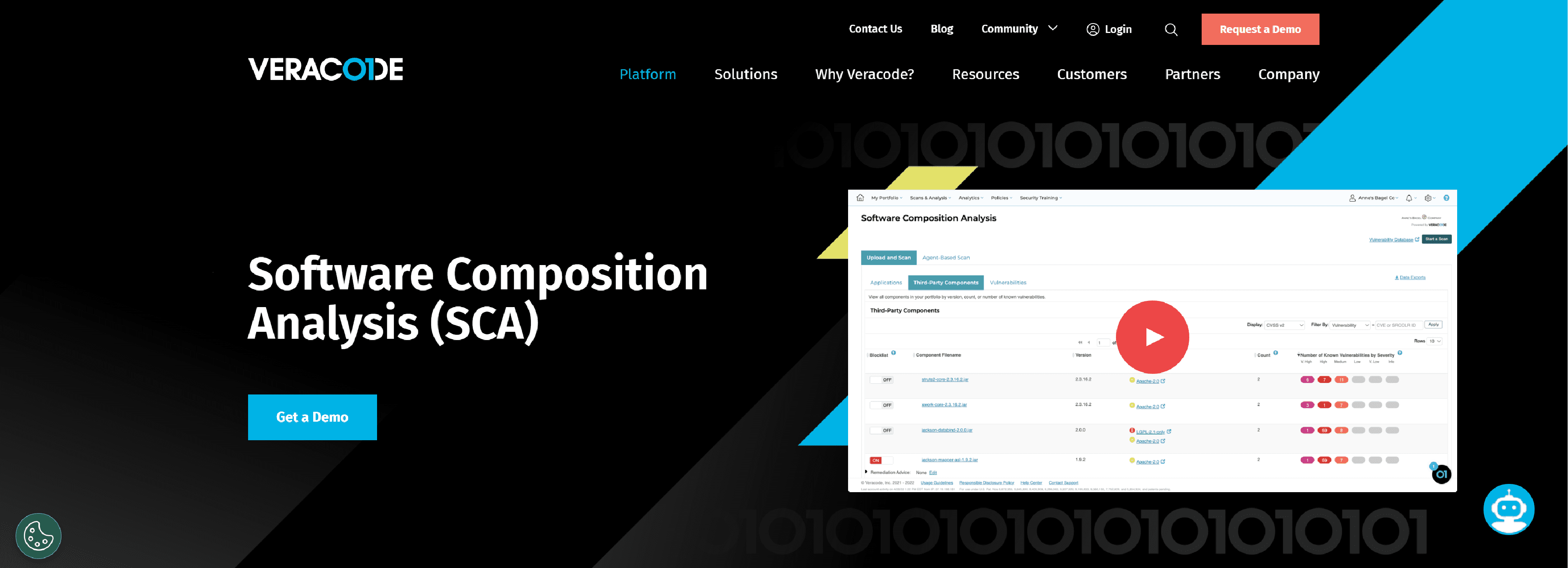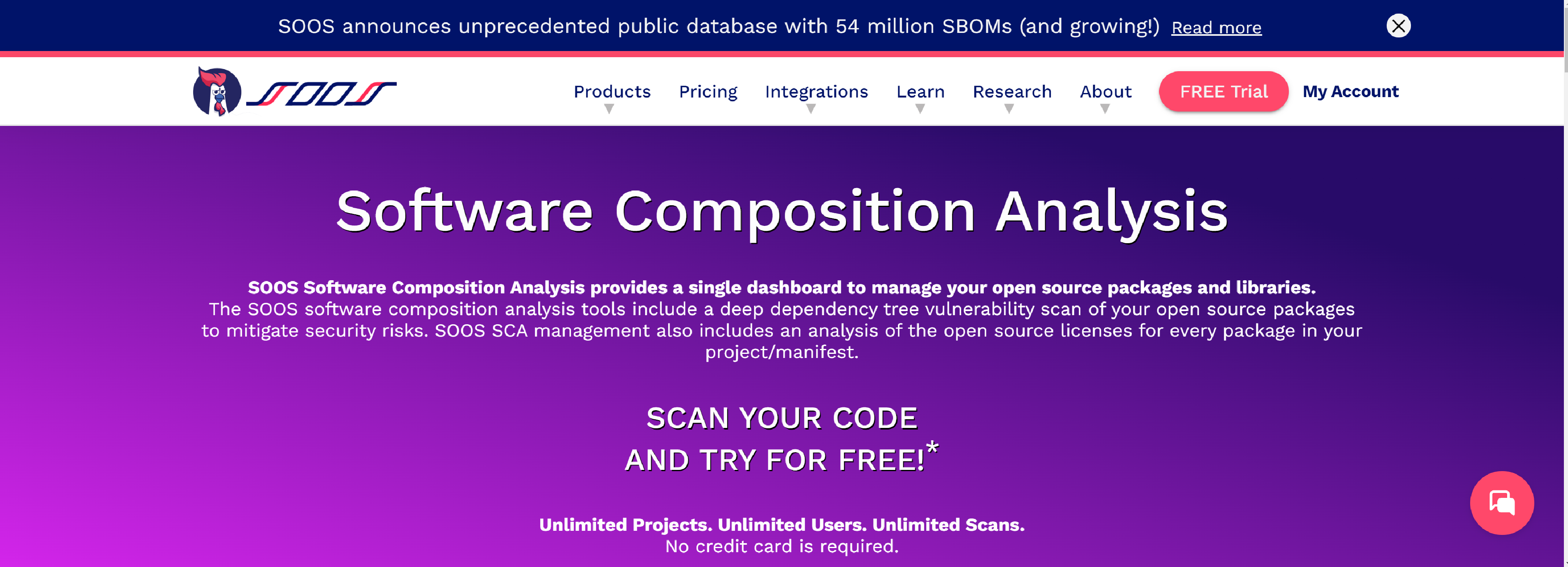Software Composition Analysis (SCA) tools are used to analyze software composition and its components that are used in building applications. The SCA tools are responsible for analyzing and examining components that are used in building software, such as libraries, modules, frameworks, and other third-party components.
Discover the top 5 best Software Composition Analysis (SCA) Tools
SNYK.IO

Snyk – automatically find, prioritize and fix vulnerabilities in your open source dependencies with developer-first software composition analysis (SCA) and industry-leading intelligence.
- Fix quickly to reduce exposure
- Monitor continuously to stay secure
- Take control of your dependencies
- Automate open source security management and governance
JFROG

JFrog Advanced Security provides software composition analysis powered by JFrog Xray, container contextual analysis, IaC security, secrets detection, and detection of OSS library and services misconfiguration or misuse.
- CVE Contextual Analysis
- IaC Security
- Software Supply Chain Security
- Accelerated Remediation
- Protect Against Malicious Activity
- Deep Binary Scanning
- Automated Governance
- Visibility and Impact Analysis
PALOALTONETWORKS

Palo Alto Networks – Proactively eliminate open source vulnerabilities and license risk with Prisma Cloud Software Composition Analysis (SCA).
- Highly accurate and context-aware
- Fully integrated with flexible fixes
- Part of the CNAPP
- OSS license compliance
VERACODE

Veracode Software Composition Analysis (SCA), teams can take advantage of open source libraries without increasing risk.
- Fix Advisor
- Dependency Graphs
- Auto-Pull Requests
- Software Bill of Materials (SBOM)
- Automate Policy Enforcement
- Reporting & Analytics
SOOS

SOOS Software Composition Analysis provides a detailed look at your deep dependency tree for Vulnerabilities and Licenses at one low price.
- Find Open Source Vulnerabilities
- Research
- Prioritize
- Push Fixes
- Monitor Vulnerabilities in Real Time